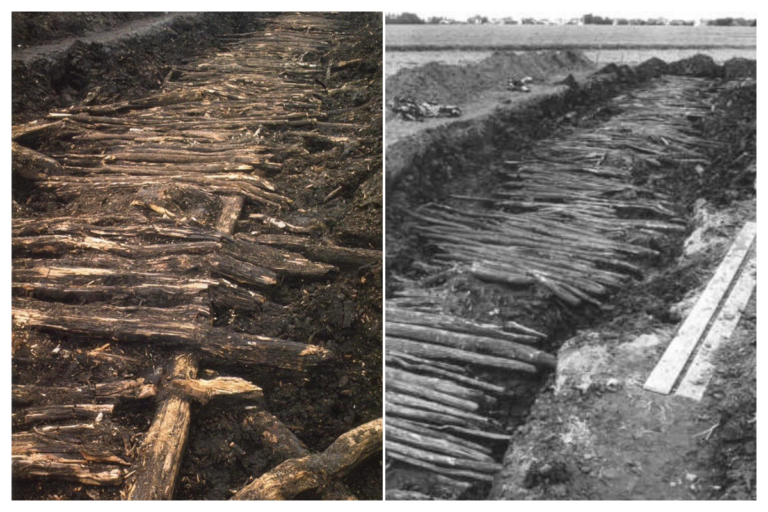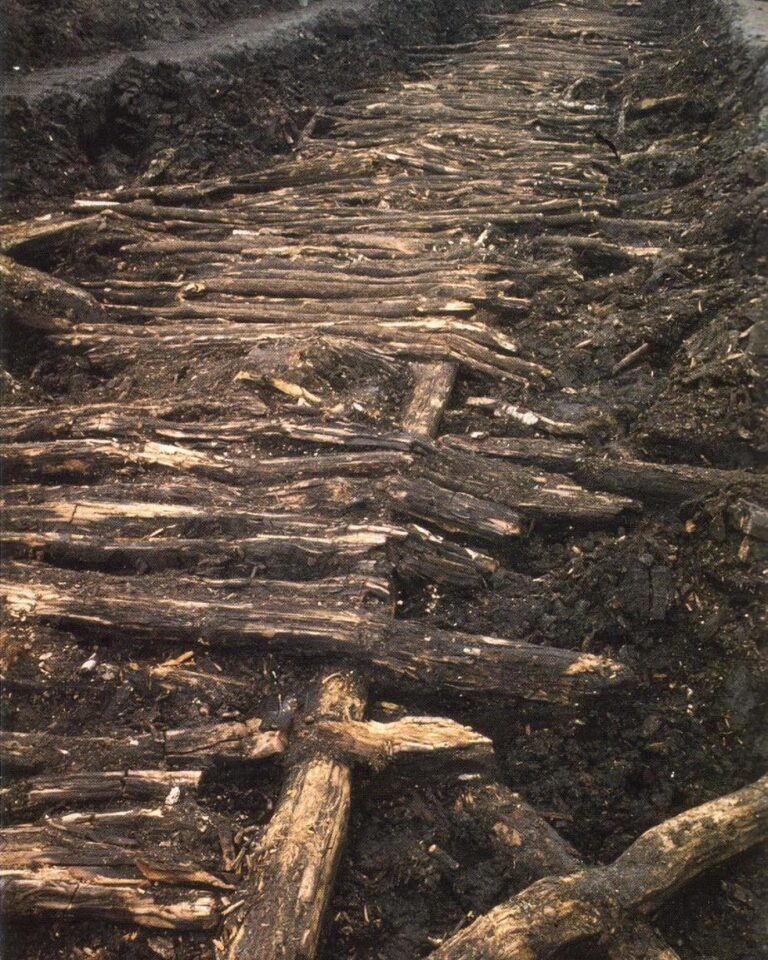The remarkable discovery of a 4,573-year-old Neolithic wooden peat road in the Netherlands, which dendrochronologically dates to 2,549 BC


In the 1980s, archaeologists unearthed a remarkable relic from the Neolithic era near Nieuw-Dordrecht, Netherlands – a 4,573-year-old wooden peat road that offers a fascinating glimpse into ancient human civilization. This extraordinary find, measuring a substantial 800 meters in length, has provided valuable insights into the sophisticated engineering skills of our ancestors.
What makes this discovery even more extraordinary is the precision with which its construction has been dated. Using the advanced scientific technique of dendrochronology, or tree-ring dating, researchers have pinpointed the exact year of its creation: 2,549 BC. This method not only highlights the road’s age but also allows us to appreciate the meticulous craftsmanship of ancient communities, showcasing their ability to construct such extensive infrastructure with a level of precision that is awe-inspiring.

The significance of this Neolithic wooden peat road extends beyond its mere age and length. It serves as a tangible link to the past, offering a tangible connection to the daily lives, activities, and societal organization of the people who once traversed its length over four millennia ago. The road’s preservation in the peat-rich environment provides a unique opportunity for archaeologists to study the ancient landscape and better understand the cultural and environmental contexts in which it was constructed.
This archaeological marvel not only contributes to our understanding of ancient technology and construction but also prompts further questions about the purpose and significance of such thoroughfares during the Neolithic period. As researchers delve deeper into the secrets held by this 4,573-year-old peat road, it promises to unveil more chapters of our shared human history.